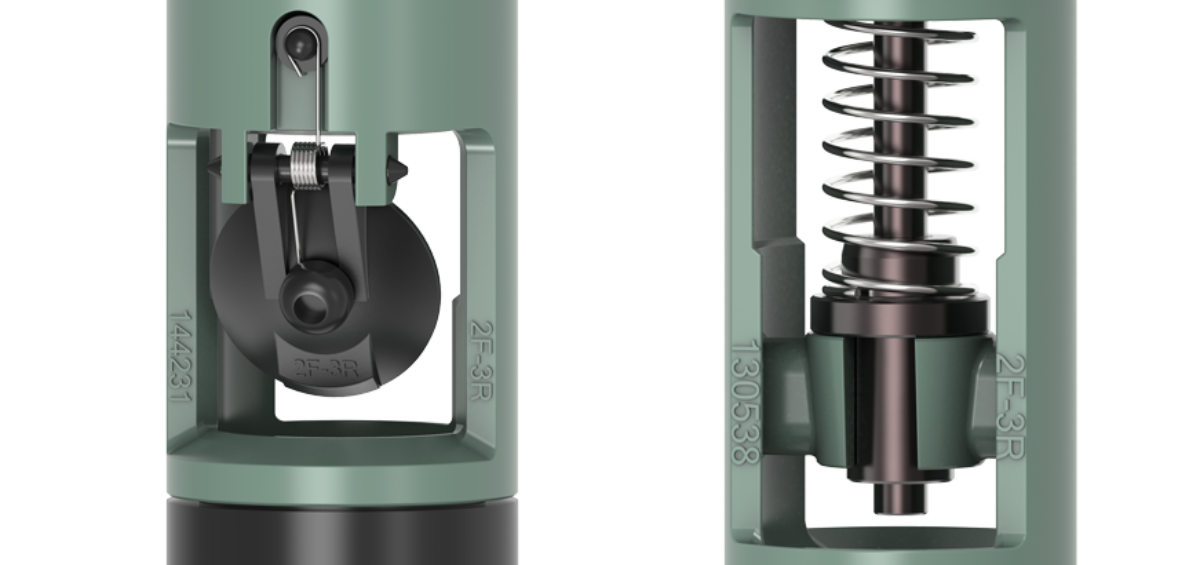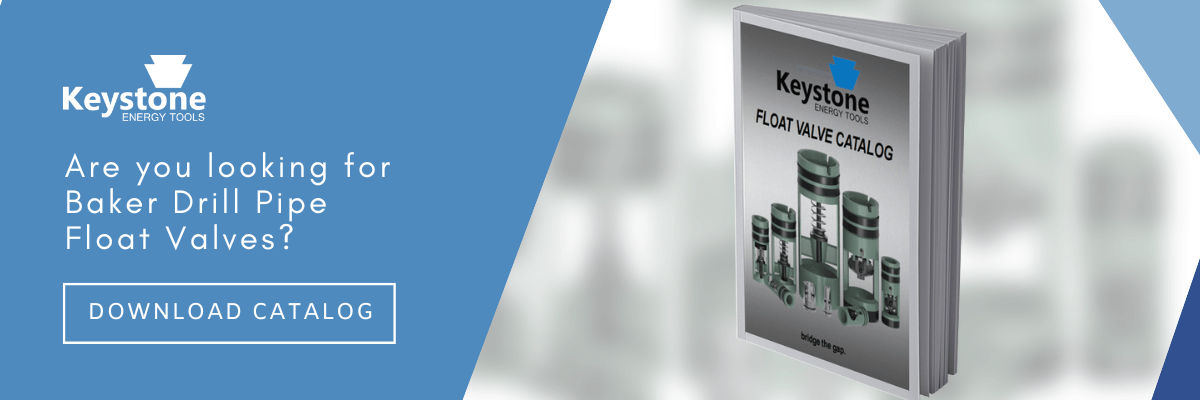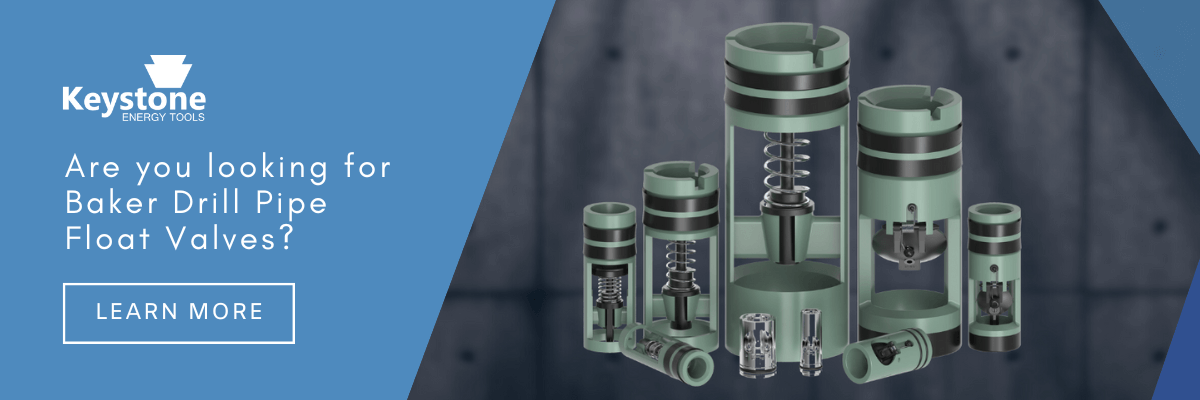
Drill pipe float valves, or non-return valves, are downhole safety valves that create barriers to prevent unwanted flow of fluids up the drill string. The valve locks down the flow of fluids while the crew at the rigfloor is making or breaking connections.
Finding the best fit for every individual project is important, and the different types go beyond just the split between the F-type plunger valves and the G-type flapper valves.
Here’s a fast primer and reminder on the differences between the types of non-return valves available.
- Model F - Plunger Type Valve
- Model FA - Ported Plunger Type Valve
- Model FC - Plunger Type Automatic Fill Valve
- Model G - Full Flow Flapper Type Valve
- Model GA - Flapper Type Valve
- Model GC - Automatic Fill Flapper Type Valve
- Model GCA - Automatic Fill/Pressure Monitoring Flapper Type Valve
- Model GS - Flapper Type-High Flow Wells
- Model GAS - High Flow Pressure Monitoring
1. Model F Plunger Type Valve
The Model F Plunger Type Valve provides an instant shutoff feature. The piston gives a reliable and economical way to completely stop flow-back when connections are being made or broken during standard drilling operations. With this model, you get a positive instantaneous shutoff with consistent fluid control throughout drilling.
2. Model FA Ported Plunger Type Valve
The Model FA pressure-monitoring valve is a version of the F valve that has a ported piston. This gives the fluid a path through the center of the valve, allowing for an automatic partial filling of the drill pipe during run in. The valve also allows for monitoring of the bit head for gas pressure and differential pressure measuring as needed.
3. Model FC Plunger Type Automatic Fill Valve
This plunger type float valve has a distinctive slotted valve stem that holds the plunger open during run-in. That allows the pipe to fill from the bottom, which can save time, reduce mess, and avoid many hazards. Once circulation begins, the valve automatically releases the plunger.
4. Model G Full Flow Flapper Type Valve
Designed for use with particularly abrasive drilling fluids, the Model G has an investment cast flapper. It allows for full unobstructed flow through the valve and it’s quick opening mechanism prevents shavings from entering the drill string when circulation stops.
Additionally, the valve fully opens when the first joint is raised from the hole, preventing the pulling of wet joints. With flappers like these, the investment cast is case hardened for wear resistance.
5. Model GA Flapper Type Valve
This valve is exactly the same as the model G, except for the presence of a quarter-inch carbide orifice (or tungsten-carbide orifice) that makes the flapper ported. The ported flapper allows for differential pressure monitoring at the surface, as well as partial automatic filling of the drill pipe during run in.
6. Model GC Automatic Fill Flapper Type Valve
This flapper type valve has a self-releasing key assembly that keeps the flapper partially open during run in, allowing the pipe to fill from the bottom, similar to the Model FC. Here, you eliminate the need to fill the drill pipe from the top, saving time and money. Like with other Model G valves, the valve fully opens when the first joint is raised from the hole, stopping the pulling of wet joints and avoiding environmental and safety concerns related to getting mud on the rig floor.
7. Model GCA Automatic Fill/Pressure Monitoring Flapper Type Valve
The GCA incorporates all the features of the G, GC, and GA drill pipe float valves. It features an unobstructed bore through the valve, measures differential pressures, and allows for automatic partial filling of the drill pipe from the bottom.
8. Model GS - Flapper Type-High Flow Wells
The Model GS is a flapper-type float valve designed for high flowing corrosive wells. The cage is designed to maximize the amount of flow possible through it, while maintaining its rated pressure.
The GS valve uses a unique flapper made with a relief groove backed by a safeguard pocket, protecting the pin and spring from excessive wear that can be caused by harsh-corrosive drilling environments. The GS are also stackable, allowing you to run two valves simultaneously.
9. Model GAS - High Flow Pressure Monitoring
The Model GAS is a flapper-type float valve designed for high flowing corrosive wells and Pressure-Monitoring.
The GAS is indistinguishable from the GS with exception to a tungsten-carbide insert in the flapper valve. The orifice also allows for partial automatic filling of the drill pipe during run in.
Keystone's Full Line of Float Valves
At Keystone, we recognize the severity of drilling with a reliable and trusted valve - float valves are essential for drilling, and must stand the test of harsh environments.
Keystone's float valves are precision manufactured from high-grade materials and perform optimally in drilling environments.
Learn more about our line of Baker Drill Pipe Float Valves today.
Related Articles
Drill Pipe Float Valve Size Chart and Installation
About Keystone Energy Tools
 Keystone Energy Tools is a manufacturer with over fifty years of combined experience in designing, manufacturing, and delivering high-quality oilfield tools, including elevators, slips, dies and inserts, tongs dies, safety clamps, stabbing guides, drill pipe float valves, baffle plates, float valve pullers, rotating mouseholes, and tong blocks.
Keystone Energy Tools is a manufacturer with over fifty years of combined experience in designing, manufacturing, and delivering high-quality oilfield tools, including elevators, slips, dies and inserts, tongs dies, safety clamps, stabbing guides, drill pipe float valves, baffle plates, float valve pullers, rotating mouseholes, and tong blocks.
By using the latest in 3D modeling for product design and by staying current with the rapid advances in manufacturing technology and quality-assurance standards, Keystone is able to manufacture and produce the most reliable products on the market today. All Keystone Handling Tools are manufactured according to API 8C and API 7K Standards.


